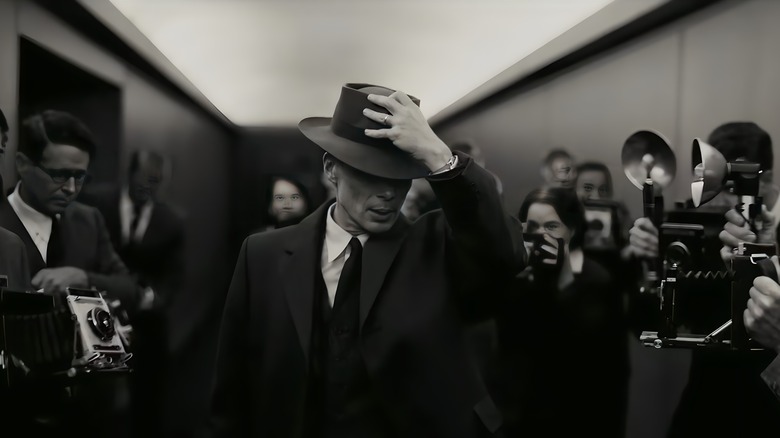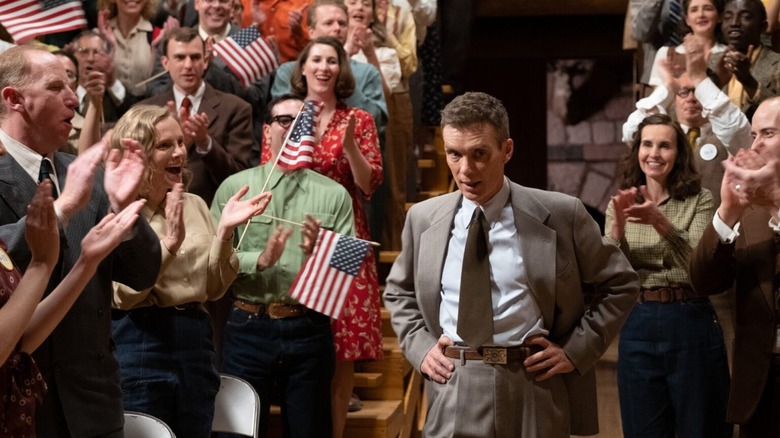Oppenheimer: Christopher Nolan's American Flag Error Has Twitter Buzzing
When you look at "Oppenheimer" from a 10,000-foot view, it's a fairly accurate historical biopic. This is especially true if you consider the fact that it's an adaptation and a drama. "Oppenheimer" spends a lot of time deviating from the historical story to delve into meta moments in relation to the atomic nature of the film's subject matter and the emotional beats of its characters. The whole experience is a bit overwhelming, and sticking strictly to the historical narrative clearly isn't the primary goal throughout the film.
Even so, we'll say it again, the movie is pretty accurate as far as basic historical facts are concerned. But that's never enough for the diehard fans, is it? They need to analyze and pick apart a movie until they find the flaws — and in this case, the Achilles heel for "Oppenheimer" has to do with a pair of stars. No, we're not referencing the black holes that the theoretical physicist pondered throughout his time teaching as a professor. We're talking about two stars on the American flag.
The point of reference comes midway through the film, shortly after the team at Los Alamos successfully tests the atomic bomb for the first time. Oppenheimer enters a hall to give a speech to a jubilant crowd, some of the members of which are shown waving small American flags. One of these is right in plain sight, and curious fans on Twitter noted that the small sign of patriotic fervor is actually a discrepancy in the film's historical continuity. Twitter user @AndrewRCraig says, "It was good and all, but I'll be that guy and complain they used 50-star flags in a scene set in 1945."
Yeah...
How many stars should the flag have?
The little observation made by Mr. Craig of Twitter set the social site ablaze. At the time of this writing, the original message has been retweeted over 2,100 times and has 50,000 likes and over 12 million views. Craig clarified in the comments that readers don't need to count the stars individually (although we did that, too, just to be sure). He points out that the pattern is what makes the difference here. Staggered rows are for 50 states. A grid arrangement is for 48 — which is the number that should have been on the flag during the time when the scene is set.
By World War II, America had been a 48-state country — with Alaska and Hawaii not yet being admitted – for three decades. It would continue to be so for nearly fifteen more years after the Trinity Test took place. It wasn't until August 21, 1959, that President Eisenhower issued Executive Order 10834. This established the formal design for a 50-star flag, the same one that continues to represent the United States of America to this day.
While the flag we see in "Oppenheimer" technically shouldn't be around, it's a minute detail in a much larger (and incredibly complex) tapestry that Christopher Nolan weaves throughout the multi-faceted, three-hour-long story. There are always these kinds of nit-picky items that catch the attention of eagle-eyed viewers. At times, a seemingly insignificant error can totally derail the reputation of a film and those associated with it. In this case, though, the issue is so small (quite literally) and on such a massive narrative stage that it seems unlikely it will do much to tarnish the otherwise positive reception of Nolan's latest cinematic masterpiece.

